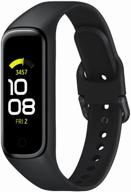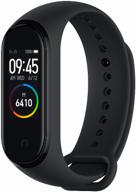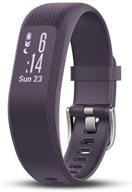
Review on 🔥 Unleash the Ultimate Virtual Reality Experience with Valve Index VR HMD PC by James Hova

Too much hype. but still very impressive.
Let me start by saying that I bought mine direct from Steam and am writing my review here to reach as many potential customers as possible. The Valve Index is by far the most advanced VR headset on the market. The highest resolution available (no, Pimax doesn't count), the highest refresh rate available, separate finger sensors, and the best lenses. He definitely has a lot of interesting things on paper. You can even use old HTC Vive room sensors if you have any. But there are issues and people need to know what they're getting themselves into if they're spending over $1,000 when other options are available. While I won't bemoan the price, one has to consider the computing power and associated cost required to reach 144Hz at this resolution. It's not a "problem" with the index, but in a negative sense it's just an important consideration when choosing the best VR headset for you. People often associate the whole VR experience primarily with raw resolution and frames per second. While these two factors are of course very important, you will never see this type of frame rate unless you have a computer powerful enough to run it. For example, my system has a Ryzen 7 3700X, 32GB RAM, RTX 2080ti. Some less demanding games hit 144+ fps, while more demanding AAA games can't. That brings me to what I like about this headset. The biggest thing for me is the reduced screen door effect due to the high resolution and lenses. It's still not much, but less than half of what you would have noticed in the original Oculus Rift. So if that was your biggest complaint about first-gen VR headsets, it would probably make you very happy. In this regard, the valve index is certainly a complete step forward. The second biggest improvement I think is less glare or also known as God Rays. This improvement is due to upgraded lenses and the number of sub-pixels. I could write a whole review on it, but for the sake of simplicity you should know that it's a big improvement. Third, yes, hitting 144 fps is the highest available refresh rate of any VR headset. Since even top-end graphics cards cannot consistently do this at this resolution, I see it more as a future-proof feature. In some games you notice the difference, in some you don't. Now let's move on to some of the not-so-great things about the Valve Index. My first issue with the valve is that, to be honest, it's not very comfortable for me. After about 30 minutes of use, I have bruises on my forehead and at the base of my skull. After all, it doesn't matter how high-tech a technology is if it becomes uncomfortable. Second, the screen itself looks pretty blurry compared to the original Oculus Rift. I believe this is the actual screen tech they are using and it seems to have a lower contrast ratio so black appears dark grey. This can be an obstacle for those who buy it to play horror games or space sims that require a dark environment. My use case is space simulators. Although the text and surroundings are much sharper, and the clear space looks flat and gray, it pulls me out of immersion. Next on the list of complaints is definitely new controller compatibility and overall intuitiveness. Many games claim full compatibility, but that's not the case that I've found. They end up behaving like regular HTC Vive or Oculus Rift controllers. I'm sure we'll see improvement over time with updates, but it's not ready for primetime right now. Another feature of the controllers is that they are made of hard, unforgiving plastic and my hands sweat like crazy. I like the textures of the HTC Vive controllers better. Lately I've found that the included near-field headphones are good, but I'd prefer they lower the cost of this headset with something else because I think most people will end up using their own higher quality headphones . In closing, I could list more pros and cons, but I'll leave what I think are the main points. After all, the Valve Index is the most advanced VR headset out there. Yes it has issues and yes it is very expensive but I think it's worth a try if you can afford it and a computer to run it. But if you just want to immerse yourself in VR and have a very good experience, I would consider the other two - Oculus Rift S and Samsung Odyssey+. Both headsets have improved resolution over the original Oculus Rift and HTC Vive. Not to mention that they require far fewer computers to get the full experience. Both headsets are available for under $400 and include everything you need to get started with VR right away. So, as always, it comes down to how much money you want to spend on the experience and how much is enough to keep you happy. I have both this headset and an Oculus Rift S. When I come back to my Oculus Rift S I will certainly notice a difference but overall the VR experience is still very good and worth $400 in my opinion. For most VR newbies, I highly recommend starting with this before investing in the Valve Index. Overall, the Oculus Rift is much easier to set up and use. But then again, if you have the cash and tinker around a bit, the Valve Index is a huge step forward in VR technology.
- Easy to Use
- Quick Start Guide
New products
Comments (0)
Top products in 👓 VR Headsets
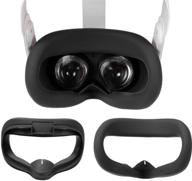
Silicone Interfacial Sweatproof Lightproof Anti Leakage

9 Review
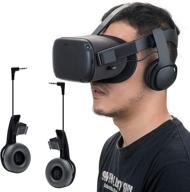
🎧 Enhance Your VR Experience with the New Version Stereo 3D 360 Degree Sounds Deep Bass VR Privacy Headphone/Soundkit Custom Made for Oculus Quest VR Headset

9 Review
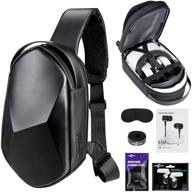
🎒 SARLAR Hard Chest Shoulder Backpack for Oculus Quest 2 - Carrying Case for Basic and Elite Version VR Gaming Headset and Touch Controllers, with In-Ear Headphones and Lens Protective Cover

8 Review
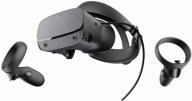
Oculus Rift S VR System, 2560x1440, 80Hz, Black

45 Review



